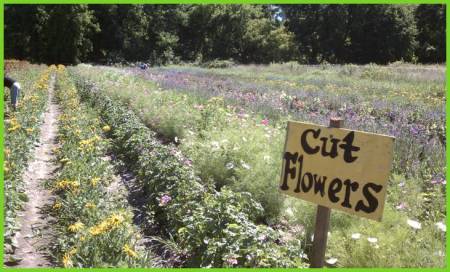 By Holli Howard, Clean Air-Cool Planet Climate Fellow
By Holli Howard, Clean Air-Cool Planet Climate Fellow
It is well documented that heavy rainfall has increased in frequency across most of the United States. In New England, there has been over a 67% increase in the amount falling during very heavy precipitation events. In Vermont, precipitation has increased by 15-20% in the past fifty years (Betts, 2011). These heavy rain events have serious economic and environmental impacts and threaten the livelihood of many Vermonters. The flooding from Tropical Storm Irene in August 2011 is still foremost in the minds of most Vermonters and many are still recovering. The flooding of farmlands was particularly impactful, and not just to the farmers, but to the local food systems in Burlington, as the FDA regulations stated:
“If the edible portion of a crop is exposed to flood waters, it is considered adulterated and should not enter human food channels. There is no practical method of reconditioning the edible portion of a crop that will provide a reasonable assurance of human food safety.”
Unfortunately millions of dollars in crop income was lost during Irene. Economically, the cost of Irene ranks among the top ten (NYT, 2011). The economic impact – statewide by the numbers stand at (Vermont Agency of Natural Resources, 2012):
- Agricultural at $10 million
- Fruit and vegetable $2.24 million
- Corn silage at $8 million
Burlington’s Intervale is a 700 acre urban farm, integral in the food system chain supplying local Community Supported Agriculture to over 500 and local produce for the most popular City Market. The 14 farms that constitute the Intervale were all completely inundated with flood waters during Irene. The loss calculated by the farm’s Executive Director, Travis Marcotte, is estimated at $750,000. Not only was there economic damage, reports Vern Grubinger of UVM extension, but due to the water quality, farmers note an increase in invasive plant species and worry about pesticides and herbicides infiltrating putting their organic status at risk.
Below are some photos I took of the Intervale peak season in July, 2012.
Now look at the photos from this blog entry during Irene by women dedicated to the Intervale and the connection with the local Coop City Market.
These extreme events are, as we say, catastrophic.
However, the smaller events, such as the July 4, 2012 rainstorm in Burlington, can be as impactful making those equally as damaging to the areas hit. The Intervale takes advantage of the fertile soils of the flood plain, but not without risk.
This map shows the flood way in red which indicates the waters most opportunistic flow – right through the majority of the farms in the Intervale. Some farms have decided the risk is too great and are deciding to or have moved– however most wish to stay and are brainstorming on mitigation and adaptation strategies to lessen the effects of these devastating flood waters.
Some big picture scenarios fall on the responsibility of state and local agencies, such as upgrading the waste water treatment facilities to minimize the outflow during these storm events. The two facilities in the map below are directly upstream from the Intervale. Both are currently in compliance with state and federal regulation, but during major events raw sewage overflow directly into the Winooski River is still an issue.
 Another way to decrease impaired water quality during these events requires educating the residents of Vermont on the importance of anchoring residential propane tanks so they don’t disconnect and float away in flood events… such as these white tanks here washed away from people’s homes spewing propane across this Vermont farm…
Another way to decrease impaired water quality during these events requires educating the residents of Vermont on the importance of anchoring residential propane tanks so they don’t disconnect and float away in flood events… such as these white tanks here washed away from people’s homes spewing propane across this Vermont farm…
 Some strategies would require careful long term planning and tenacity from the farmers by changing the types of crops they plant… adapting to climate change with crops that may be less impacted by flood waters such as certain fruit or nut trees or even rice is being investigated by Will Raap, founder of the Intervale Center. Also up for consideration may be chickens on tracks – certainly easier to move than lettuce and radishes!
Some strategies would require careful long term planning and tenacity from the farmers by changing the types of crops they plant… adapting to climate change with crops that may be less impacted by flood waters such as certain fruit or nut trees or even rice is being investigated by Will Raap, founder of the Intervale Center. Also up for consideration may be chickens on tracks – certainly easier to move than lettuce and radishes!
If you were a farmer and this is your livelihood or if you are a farmer…
Would you wait it out or move? Would you risk planting cover crops for a few years to assess the situation or increase your riparian buffer and lose income from that acreage? What would you plant if your farm flooded every spring? Would you try to learn from the Far East and try your hand at rice? Maybe a vineyard?…



